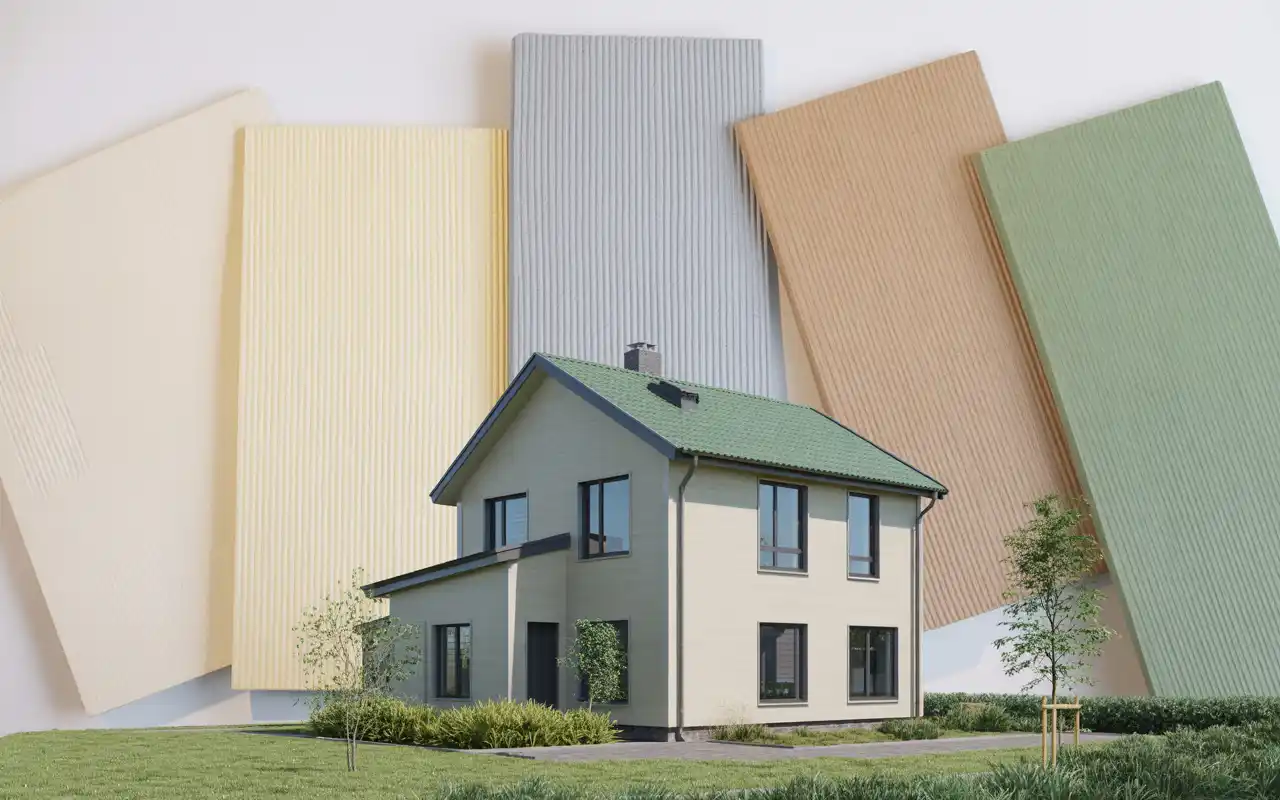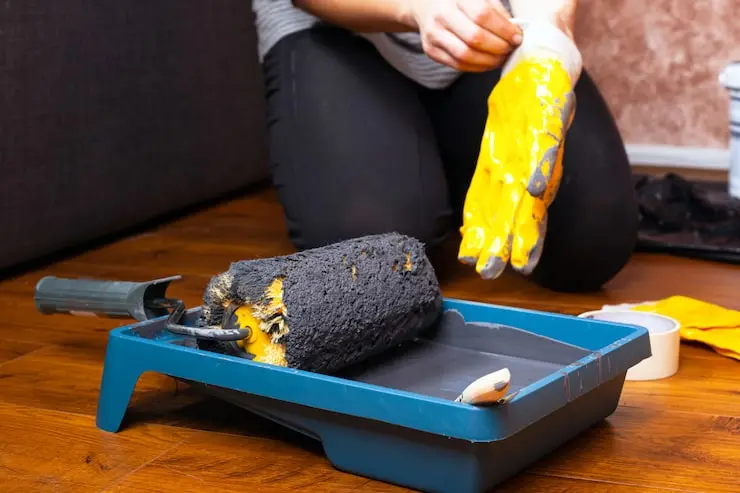Water damage is not a slow leak you can ignore. It is a rapid chemical and biological crisis that starts the second water touches your materials.
For homeowners, waiting even a few hours can mean the difference between simple drying and thousands of dollars in major reconstruction. We will give you the expert timeline to help protect your home’s structural integrity. Understanding how fast can water cause damage to your property helps you act quickly and save money on repairs.
Table of Contents
Common Signs of Water Damage

Spotting water damage early saves you from expensive repairs. Here are the warning signs every San Diego homeowner should watch for.
- Visual indicators show up first. Look for water stains on ceilings and walls. These appear as brown, yellow, or copper-colored rings. Paint bubbles and peeling wallpaper signal moisture trapped behind surfaces. Spiderwebbed cracks and small hairline fractures mean water has weakened the structure.
- Physical changes happen to materials exposed to moisture. Warped or sagging ceilings indicate water pooling above. Wooden floors buckle and cup when they absorb water. Soft spots in walls or floors mean the material underneath has deteriorated.
- Odor problems develop quickly. A musty smell means mold is growing somewhere. This happens in as little as 24 to 48 hours after water exposure. The smell gets stronger in closed spaces like closets and cabinets.
- Humidity issues create ongoing problems. If your home feels damp or sticky, excess moisture is in the air. Condensation on windows and pipes signals poor ventilation. These conditions let mold thrive and damage porous materials.
In San Diego’s coastal climate, humidity levels naturally run higher. This speeds up water damage. What takes a week inland might happen in three days here. Pay extra attention during winter months when rain and marine layer fog increase moisture levels.
Common Reasons for Water Damage
Water enters your home through many paths. Knowing the causes helps you prevent water damage before it starts.
- Plumbing failures top the list. Leaking pipes behind walls go unnoticed for months. A burst pipe releases gallons of water in minutes. Old galvanized pipes common in older San Diego homes corrode from the inside. Appliance leaks from washing machines, dishwashers, and water heaters cause floods when hoses fail.
- Roof problems let water in from above. Missing or damaged shingles create entry points. Poorly maintained roofs with clogged gutters overflow during storms. In San Diego, our clay tile roofs last decades but the underlayment fails first. Even small roof leaks saturate insulation and wooden beams.
- Foundation issues bring water up from below. Cracks in foundation walls and floors let groundwater seep in. Poor grading around your home directs rain toward the foundation instead of away. Inadequate drainage systems fail during heavy rain.
- HVAC and ventilation failures create hidden moisture. Air conditioning units that aren’t properly maintained produce condensation. Poor ventilation in bathrooms and kitchens traps humidity. This leads to mold growth even without a visible leak.
- Natural disasters and weather events strike without warning. Flash floods during San Diego’s rainy season overwhelm drainage systems. Even properties not in flood zones experience water intrusion during severe storms.
- Human error causes preventable damage. Overflowing bathtubs, forgotten running faucets, and improperly sealed windows let water in. These small amounts of water add up over time.
The most dangerous situations combine multiple factors. A clogged gutter during a storm puts extra pressure on your roof. Poor ventilation after a leak allows mold to spread. This is why removing standing water immediately matters so much.
How Much Water Can Cause Structural Damage?
You don’t need a flood to face serious problems. Even minor water exposure damages your home when left untreated.
Minor damage happens with less than 1 inch of water. This small amount affects surface materials. Carpets become soaked and develop mold. Wooden floors absorb moisture and start warping. Drywall at floor level wicks water up like a sponge. The cost to fix minor damage ranges from $1,200 to $3,500 in San Diego. This includes carpet replacement, drying equipment, and minor repairs.
Moderate damage occurs with 1 to 2 inches of water. Water at this depth saturates insulation inside walls. Drywall deteriorates and loses strength. Electrical systems face risk when outlets contact water. Metal surfaces begin corroding. Moderate damage costs $3,500 to $8,000 to repair. You’re replacing drywall, insulation, and possibly electrical components.
Significant damage results from more than 2 inches of water. This level threatens your home’s structural integrity. Wooden support beams absorb water and weaken. Foundation walls face pressure from standing water. Electrical hazards become life-threatening. Repairs start at $8,000 and often exceed $25,000. Major structural drying and reconstruction work is needed.
Location matters as much as amount. One inch of water in a finished basement causes more damage than the same amount in a garage. Water trapped in walls creates bigger problems than surface flooding. A slow leak behind drywall does more long-term harm than a quick surface spill.
Insurance companies classify water damage into three categories.
- Category 1 water damage comes from clean water sources like supply lines. This water is sanitary and easier to clean.
- Category 2 water damage involves grey water with contaminants. Washing machine overflow and toilet tank leaks fall here.
- Category 3 water damage is black water from sewage or flooding. This grossly contaminated water requires professional remediation.
From my 23+ years handling water damage restoration in San Diego, I’ve seen half-inch leaks destroy homes. The key is time. A small leak ignored for weeks causes the same damage as two inches of flood water. Act quickly no matter the amount.
How Long Does It Take for Water to Cause Structural Damage?

Time determines how much damage occurs. Here’s the timeline from first exposure to critical failure.
First 24 Hours: The Critical Window
Water immediately begins soaking into porous materials. Drywall absorbs moisture within minutes. Wooden floors start swelling at the edges. Carpets and fabrics become saturated. You won’t see major damage yet, but it’s starting.
During these first hours, you can prevent serious problems. Remove standing water with wet vacuums. Pull up wet carpets and padding. Run fans and dehumidifiers. Open windows if humidity allows. Quick drying stops minor damage from becoming moderate.
The cost of immediate action is minimal. Renting drying equipment runs $50 to $150 per day. Compare that to thousands in repairs later. Every hour counts.
24 to 72 Hours: Damage Accelerates
Significant changes happen after the first day. Wooden elements swell noticeably. Doors stick in frames. Drawers won’t close. Drywall softens and loses structural strength. Paint begins bubbling.
Mold growth starts between 24 to 48 hours. Spores land on wet surfaces and multiply fast. You might smell it before seeing it. Metal surfaces show corrosion spots. This is when minor damage becomes moderate damage.
If you haven’t started drying by this point, call professionals. Water damage restoration services use industrial equipment to extract moisture from walls and floors. Thermal imaging finds hidden wet spots. This prevents mold from establishing deep colonies.
In San Diego’s moderate climate, mold grows especially fast. Our average humidity of 60-70% creates perfect conditions. What takes three days elsewhere happens in two here.
After 3 Days: Serious Deterioration
By day three, structural compromise begins. Wooden beams lose load-bearing capacity. Drywall crumbles when touched. Mold colonies spread through wall cavities. The musty smell becomes overwhelming.
Electrical systems face danger. Water reaches outlets and wiring inside walls. This creates shock hazards and fire risks. Never touch electrical components in water-damaged areas.
Floor joists and ceiling supports weaken. Sagging becomes visible. In extreme cases, ceilings collapse under the weight of saturated insulation and drywall.
Repair costs jump dramatically after three days. You’re now replacing entire wall sections, not just patching. Structural drying requires specialized equipment running for days. Mold remediation adds thousands to the bill.
After 7 Days: Critical Damage
A week of water exposure puts your home in dangerous condition. Structural damage is severe. Wood rot sets in. Support beams need replacement. Foundation walls show stress cracks.
Mold growth is extensive and hazardous. Black mold releases toxins affecting health. Remediation requires containment barriers and air scrubbers. You might need to vacate during cleanup.
Insurance claims become complicated. Carriers question why you waited so long. They may deny coverage for damage they consider preventable.
Total restoration after seven days costs $15,000 to $50,000 or more. This includes structural repairs, mold remediation, and rebuilding damaged areas. Some homes become uninhabitable.
Material-Specific Damage Rates
Different materials react differently to water.
- Drywall becomes unsalvageable after 48 hours of saturation.
- Hardwood flooring cups within 24 hours but might be saved if dried fast.
- Carpet and padding develop mold in 24-48 hours and usually need replacement.
- Insulation holds water like a sponge and rarely dries properly.
- Concrete resists immediate damage but wicks water to adjacent materials.
Understanding these timelines helps you prioritize. Save hardwood floors first. Accept that carpet probably goes. Focus drying efforts on structural elements.
San Diego-Specific Water Damage Considerations
Our local climate creates unique challenges. San Diego receives 10-12 inches of annual rainfall, concentrated in December through March. When it rains, it often pours. Many homes have poor drainage because dry weather makes it seem unnecessary.
- Coastal properties face constant humidity from ocean air. Homes within three miles of the coast experience faster mold growth. Salt in the air accelerates metal corrosion. Condensation issues run year-round.
- Older homes in neighborhoods like North Park, Normal Heights, and Kensington have outdated plumbing. Galvanized pipes installed 50-70 years ago deteriorate. Foundation settling in our clay soil creates cracks. These homes need extra vigilance.
- Hillside properties experience unique drainage problems. Water flows downhill during storms. Homes at the bottom of slopes collect runoff. Retaining walls channel water against foundations.
Local building codes updated after major storms. Homes built before 1990 often lack proper waterproofing. Adding drainage systems and waterproof membranes protects older properties.
Prevention Checklist: Protect Your Home
Taking action before problems start saves thousands. Here’s what works in San Diego homes.
- Monthly inspections catch small issues early. Check under sinks for leaks. Look at water heater connections. Inspect appliance hoses for cracks or bulges. Walk your property’s perimeter after rain.
- Seasonal maintenance prepares for weather changes. Before the rainy season, clean gutters and downspouts. Trim trees away from rooflines. Test sump pumps if you have them. Seal window and door frames.
- Upgrade vulnerable systems. Replace washing machine hoses every five years. Install water leak detectors near appliances. Consider a whole-house water shutoff system. These automatically stop flow when sensors detect leaks.
- Improve drainage around your foundation. Soil should slope away from the house. Extend downspouts at least six feet from walls. Add French drains if needed. In San Diego’s clay soil, proper grading is critical.
- Monitor humidity levels inside. Keep indoor humidity between 30-50%. Use exhaust fans when cooking or showering. Run your AC to control moisture. In older homes without central air, use dehumidifiers.
- Know your shut-off valves. Main water shutoff, individual fixture valves, and gas lines. Practice turning them off. In a burst pipe emergency, seconds matter.
DIY vs. Professional Water Damage Restoration
Small problems you can handle yourself. Major issues need experts. Here’s how to decide.
- Handle yourself if the water is clean (Category 1), the area is small (under 10 square feet), and you catch it within hours. Use wet vacuums, fans, and dehumidifiers. Remove wet materials quickly. Monitor for mold over the next week.
- Call professionals for contaminated water (Category 2 or 3), large affected areas, water inside walls, flooding over 2 inches deep, or anything involving electrical systems. Also call if water has sat for more than 24 hours.
Professional water damage restoration services bring thermal imaging cameras to find hidden moisture. Industrial dehumidifiers remove water from structural materials. Air movers create proper drying conditions. Moisture meters confirm when materials are truly dry.
The difference in cost seems large upfront. DIY might cost $200 in equipment rentals. Professional service runs $2,000 to $5,000. But improper drying leads to mold requiring $10,000+ in remediation. Hidden moisture causes structural damage costing tens of thousands.
Insurance companies often require professional certification for claims. Your DIY work might void coverage. Check your policy before deciding.
Understanding Insurance Claims for Water Damage
Water damage insurance claims are complex. Success depends on quick documentation and understanding your coverage.
Most homeowner policies cover sudden and accidental water damage. A burst pipe is covered. Gradual leaks from poor maintenance are not. Flood damage requires separate flood insurance. This confuses many San Diego homeowners who assume coverage.
- Document everything immediately. Take photos and videos showing the source and extent of damage. Save wet materials if safe to do so. Keep receipts for emergency repairs. Start a timeline of events.
- Contact your insurance company within 24 hours. They’ll send an adjuster to assess damage. Don’t throw away damaged items until after inspection. The adjuster needs to see evidence.
- Get professional estimates from licensed contractors. In San Diego, require California contractor license numbers. Multiple estimates strengthen your claim. Insurance companies sometimes lowball initial offers.
- Know your policy limits for water damage. Standard coverage ranges from $5,000 to $25,000. Additional living expenses coverage pays for hotels if your home is uninhabitable. Replacement cost coverage beats actual cash value.
- Fight claim denials if they seem wrong. Insurance companies initially deny 20-30% of water damage claims. Appeal with additional documentation. Hire a public adjuster if needed. They work on your behalf for a percentage of the settlement.
Average claim payouts in San Diego run $8,000 to $12,000. But this varies wildly based on damage extent. I’ve seen claims from $2,000 for minor water intrusion to $85,000 for major flooding with mold.
Real Cost Data: What Water Damage Repairs Actually Cost in San Diego
Knowing real numbers helps you budget and negotiate. These are 2024-2025 prices from San Diego contractors.
- Emergency water extraction: $500-$1,500 for immediate response and water removal. Includes initial assessment and equipment setup.
- Structural drying: $1,200-$3,500 for 3-5 days of industrial dehumidifier and air mover use. Thermal imaging adds $200-$400.
- Drywall replacement: $2-$3 per square foot for removal and disposal. $3-$5 per square foot for new installation. The average room costs $1,500-$3,000.
- Flooring replacement: Carpet $3-$8 per square foot installed. Hardwood $8-$15 per square foot. Tile $10-$20 per square foot. LVP (luxury vinyl plank) $5-$10 per square foot.
- Mold remediation: Small areas under 10 square feet run $500-$1,500. Moderate (10-100 square feet) costs $2,000-$6,000. Extensive mold exceeds $10,000 and requires full containment.
- Insulation replacement: $1.50-$3.50 per square foot for removal and replacement. Wet insulation never dries properly.
- Electrical repairs: Outlet replacement $150-$300 each. Panel work $500-$2,000. Full rewiring in water-damaged walls $2,000-$8,000.
- Plumbing repairs: Fixing burst pipes $200-$1,000 depending on location and access. Whole-house repiping $4,000-$15,000.
- Total project costs: Minor water damage $2,000-$5,000. Moderate damage $5,000-$15,000. Major flooding $15,000-$50,000+. Complete restoration with structural repairs $50,000-$150,000.
These San Diego prices run 15-25% higher than national averages. Labor costs more here. Materials cost more. Permits and inspections add fees. But quality work protects your investment.
For Water Damage Restoration, San Diego Home Remodeling is Here to Help
When water damage threatens your property, you need a local, expert partner who can mobilize within the 24 to 72 hours critical period. San Diego Home Remodeling offers full-service water damage restoration services in San Diego, providing the rapid response and technical expertise required to secure your home. We specialize in effective structural drying, complete water clean up, water damage, and full reconstruction.
If you are facing water loss, do not waste another critical hour. We are available to help you immediately.
Call San Diego Home Remodeling Now for 24/7 Emergency Service!
Conclusion
Understanding how fast can water cause damage to your property is the most important defense a homeowner has. From minor swelling in the first hour to full structural damage after only a few days, the clock is always running. By knowing the water damage timeline, recognizing the sign of water damage, and calling professionals to act quickly to remove standing water, you can transition from disaster to recovery with minimal loss. The commitment to prevent water damage through maintenance and rapid response is the only way to safeguard your investment.
Frequently Asked Questions
How long does it take for mold to start growing after a water leak?
Mold spores can germinate and begin microbial growth on wet surfaces in as little as 24 to 48 hours under ideal conditions (food, moisture, temperature). This is why swift structural drying is critical to reduce the risk of mold growth.
Will my home insurance cover the cost of water damage restoration?
Most standard homeowners insurance covers sudden and accidental water damage, like a burst pipe. They typically do not cover gradual leaks, maintenance issues, or flood damage (which requires a separate flood policy). Always check your specific policy and file an insurance claims report immediately.
Why is 24/7 water damage restoration service necessary?
Because damage progresses from Minor to Significant in the span of 24 to 48 hours, an immediate response is crucial. A 24/7 water damage restoration team can begin mitigation and water extraction right away, saving materials and preventing the onset of long-term problems like widespread mold.
What is the risk of structural damage from a small, slow leak?
While not as fast as a flood, a slow leak can cause significant hidden damage. The constant moisture saturates drywall and wood over weeks, leading to wood rot, degradation of the structural integrity, and deep, hidden mold growth. This often results in higher eventual repair costs because of the extensive hidden tear-out required.







